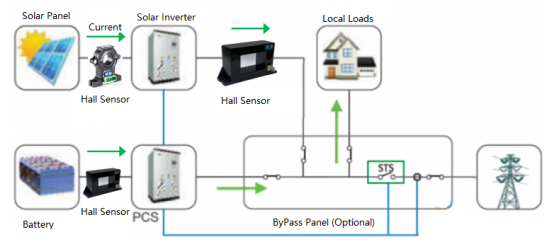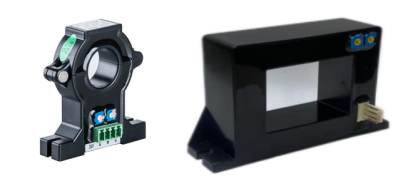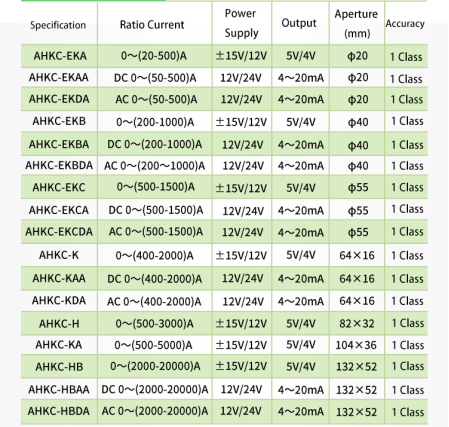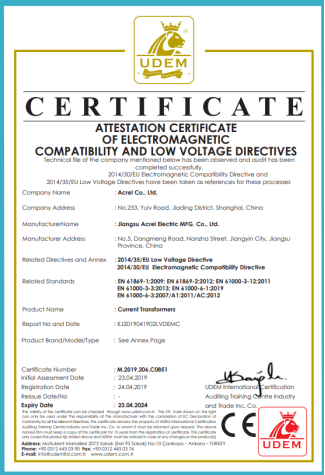Engineer: Tim Tel: +86 18761599716 E-mail: tim.ma@email.acrel.cn
Jiangsu Acrel Electrical Manufacturing Co.LTD. Wuxi Jiangsu 214405
Abstract: This article analysis the operation principle of hall current sensor, and application in battery management system.
Keywords: Hall effect current sensor, Charge and discharge current, battery management system
Background: In most factories, the use of battery cabinets, it is to charge many newly assembled batteries together, mainly used in power plants, power supply bureau and other power DC system, communication room and base station, railway power supply substation finance, chemical, energy storage, enterprises and institutions of UPS room and other backup power use occasions. To put it bluntly, they can use very powerful chargers while charging many batteries. Specially designed and manufactured for power batteries, performance testing and cycle life testing, it can detect nickel-cadmium, nickel-metal hydride, lithium ion, lithium polymer and other batteries.
The battery cabinet can not only measure, use the three-phase current, voltage, power, but also monitor the current, voltage, power factor of the multiple branches. At the same time, it can display the cumulative active and incremental power, monitor the operation parameters of the system. The battery cabinet also has the functions of operation management and safety management, which effectively improves the reliability of the whole distribution system and reduces the risk. When the battery is charged and discharged, there are strict requirements on the charge and discharge current. This paper introduces the realization of the battery charge and discharge current monitoring by the Hall current sensor in detail.
1. Operation Principle
Hall current sensor is based on the hall effect of a magnetic field sensor, is sensitive to magnetic field, simple structure, small size, fast response characteristics, according to the principle can be divided into open loop (straight) and closed loop (magnetic balance), based on the practical application of open loop (straight) principle sensor structure is relatively compact, small power consumption and low cost, widely used open loop (straight) principle hall current sensor used in battery monitoring system.
Hall current sensor open loop (straight) principle: when the original edge current IP flows through a long wire, the magnetic field around the wire, the size of the magnetic field is proportional to the current flowing through the wire, the magnetic field gathered in the magnetic ring, through the magnetic ring air gap hall element measurement and amplification output, the output voltage Vs accurately reflect the original edge current IP. The general rated output is rated at 5V.
2. Product Introduction
Hall current sensor is mainly suitable for ac, dc, pulse and other complex signal isolation conversion, through the hall effect principle of transformed signal can be directly by AD, DSP, PLC, secondary instrument acquisition device directly acquisition and accept, fast response time, current measuring wide range of high precision, overload capacity, good linear, anti-interference ability. Suitable for current monitoring and battery application, inverter power supply and solar power management system, DC screen and DC motor drive, electroplating, welding application, frequency converter, UPS servo control and other system current signal acquisition and feedback control.
3. Application
3.1 Scene

3.2 Function
1. high speed of response time
2. High measurement accuracy, and no insertion loss
3. Small volume, Save more space area
4. Low temperature drift
5. Strong anti-interference ability
3.3 Product Photo

3.4 Product Table

3.5 Certificate

4. In the End
As the power supply of the DC system, the battery is a very critical equipment, which needs to be standardized, reasonable, real and effective daily maintenance. The Hall current sensor provides an important basis for the daily maintenance of the battery by monitoring the battery charge and discharge current state, ensures the reliable operation of the battery pack, and plays an important role in the battery monitoring.
References:
[1] Acrel Enterprise Microgrid Design and Application Manual. Version 2022.05
 English
English















